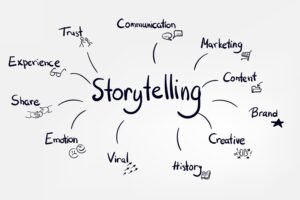Black and white. Full and empty. Happy and sad. Light and dark. Forward and backward. Love and hate. You probably picked up on this pattern of opposites pretty quickly. But does this pairing fit the list? Creative and logical.
This particular word pairing might be considered opposites in certain contexts, but it should not when it comes to content. In fact, the combination of creative content and logical content can bring about one of the greatest, most powerful content strategies possible.
What comes to mind when you consider creative content? You might think of content that makes creative use of media like images, graphics, and video. Perhaps you think of innovative layouts and ingenious branding. Maybe creative content means brilliant writing and persuasive calls-to-action.
When done properly, logical content does not curtail or stifle creativity. At its best, logical content showcases the creativity of the content and improves the user experience. In this context, logical content typically refers to content types (like blog articles, emails, eBooks, etc.) and models that work well together to provide the most useful, relevant content to the user.
For example, many websites and blogs feature articles about various topics. Somewhere on the webpage, whether it is on the side or at the end of the article, it is likely that the site or blog suggests other relevant articles.
As a hearing specialist, your website probably focuses on content about hearing problems and conditions, devices, and other treatment options. If you were to select a page on your website about noise-induced hearing loss, what type of related articles would you expect to see? Perhaps you may be directed to an article about how to reduce your risk for noise-induced hearing loss or a page about hearing aids.
However, what would you think if the suggested “related” articles were about medications used with premature newborns resulting in hearing loss? While an interesting topic, it is not strongly related to the topic you originally selected. Because the suggested content is not relevant, you, as the website visitor, are less likely to continue reading additional articles. A website visitor may even completely miss other articles with relevant information that they would find extremely helpful and could lead them to contact your practice.
That is where logical content can come into play. Logical content focuses on promoting content that is most useful and relevant to the user. Logical content also includes formatting and layouts that will be most user-friendly and familiar to the website visitor.
At its peak, logical content would ensure that your website visitor who reads about noise-induced hearing loss is led to the most relevant, useful content for their needs and interests. When logical content works properly, your website visitors will have an enhanced experience on your site and will be better served by your existing content.
Does a focus on logical content mean that creativity is neglected or stifled? Of course not! Pulling the most relevant, useful content to your website visitor does not mean you cannot feature creative content or that you should sacrifice the quality of content. In fact, logical content may even help the most creative content gain more views by bringing it to the right viewers.
To learn more about how you can find the right balance between creative content and logical content, we invite you to contact us today at AudiologyPlus.




